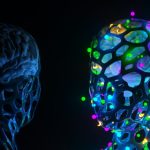The Journal of Engineering’s article “Computer Vision for Eye Diseases Detection Using Pre-trained Deep Learning Techniques and Raspberry Pi” introduces a novel method for diagnosing various eye conditions. Leveraging pre-trained models from ImageNet, this approach underscores the potential of integrating advanced computer vision with practical healthcare applications. Early detection through this methodology is vital for preventing visual impairments and ensuring timely treatment, enhancing overall patient care in ophthalmology.
Innovative Diagnostic Approach
The study employs pre-trained ImageNet models to identify several eye diseases automatically, including cataracts, foreign bodies, glaucoma, subconjunctival hemorrhage, and viral conjunctivitis. Initially, the research utilized a dataset consisting of 645 clinically acquired images, categorized into two groups: healthy and affected subjects. By comparing the prediction performance of various pre-trained models, the study aimed to find the most effective method for early disease detection.
The models were evaluated using multiple metrics such as accuracy, precision, recall, F1 score, and the Matthews Correlation Coefficient (MCC). The InceptionResNetV2 model emerged as the most accurate, achieving a 93% accuracy rate. Other models like MobileNet, Residual Network ResNet50, and InceptionV3 scored 90%, 86%, and 85%, respectively. Visual Geometry Group VGG19 and Neural Architecture Search Network NASNetMobile had lower performances of 78% and 72%.
Real-Time Monitoring Integration
To implement this diagnostic approach in real-time, the most successful model, InceptionResNetV2, was integrated with a Raspberry Pi and digital camera setup. This integration allows for immediate analysis and monitoring of eye health, potentially transforming the landscape of ophthalmological diagnostics by making early detection more accessible and efficient.
In previous studies, efforts to automate eye disease detection have often struggled with lower accuracy and limited real-time application. Older methods frequently relied on less sophisticated algorithms, leading to higher rates of false positives and negatives. The current study’s use of advanced deep learning techniques represents a significant step forward compared to these earlier attempts.
Recent research has also explored the use of artificial intelligence in medical diagnostics, but many have focused on other areas like cancer detection or overall health monitoring. This study’s specific focus on ophthalmology sets it apart, demonstrating the versatility and specificity of pre-trained models in addressing distinct medical challenges.
The combination of high accuracy and real-time monitoring capability highlights the potential for this approach to be implemented in clinical settings. For practitioners, this means a reliable, quick, and efficient tool for diagnosing various eye conditions, ultimately improving patient outcomes through timely intervention.
Understanding the importance of early detection in ophthalmology, this method leverages state-of-the-art deep learning models to provide an innovative solution for diagnosing common eye diseases. By integrating these models with accessible technology like Raspberry Pi, the approach offers a practical and scalable option for healthcare providers.










